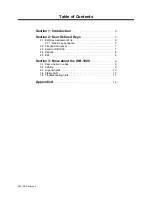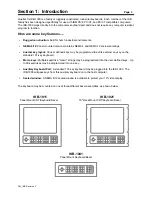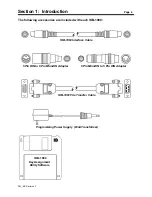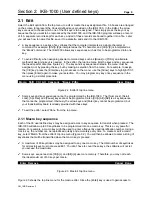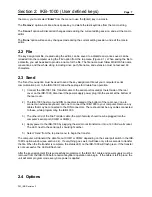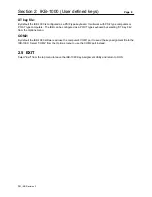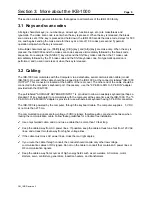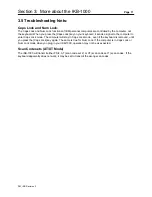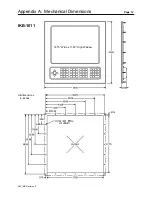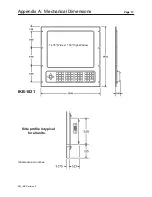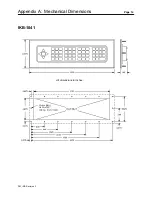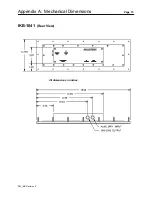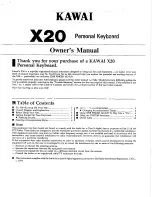
Section 2: IKB-1000 (User defined keys)
Page 5
PM_IKB Revision 3
Edit File Send Options Exit
IKB-1080 Key Assignment Utility, V3.0. Copyright 1990, 1991. Quartech Corp.
Each of the 36 user defined keys can be programmed to generate the scan code sequence of almost any
key on the 101 key keyboard. Also, each of the keys may be programmed as a macro. A macro key
allows you to program a number of keystrokes into one key. When the operator presses a macro key, the
IKB-1000 will generate the scan code sequence of each key that was programmed into the macro string.
(See section 2.1.1 for more details on macro keys). A simple software utility allows the user to create a
file defining each key. The file can then be sent to the IKB-1000 via the computer's serial communication
port. Since the IKB-1000 stores the data file in nonvolatile memory (EEPROM), you only have to program
it once, but you can change the program as often as needed.
An auxiliary keyboard port is provided that allows an external keyboard to be active at the same time as
the IKB-1000. The IKB-1000 will accept input at the auxiliary keyboard port and pass these key codes
through to the host computer. In this way, the IKB and the external keyboard can be online at the same
time.
IKB-1080 Key Assignment Utility
The IKB-1080 Key Assignment Utility is a computer program that allows you to define the scan code
sequence that will be transmitted by each of the 36 user defined keys. The IKB-1080 software is only
needed to configure the IKB-1000 keyboard. Once this is done, the keyboard is a stand alone device that
can be used with any compatible computer. The IKB-1080 software does not need to be installed on the
host computer to use the keyboard.
Minimum hardware requirements for the IKB-1080: IBM PC/XT, PC/AT, PS/2, or 100% compatible
computer running under MS-DOS 2.1 or greater with an asynchronous serial communication port.
To start the program, type:
IKB-1080
at the DOS prompt.
The IKB-1080 program's display screen will look like figure 2.1.
+)))),
+)))),
+)))),
+)))),
+)))),
+)))),
+)))),
+)))),
+)))),
*
*
*
*
*
*
*
*
*
*
*
*
*
*
*
*
*
*
.))))-
.))))-
.))))-
.))))-
.))))-
.))))-
.))))-
.))))-
.))))-
+)))),
+)))),
+)))),
+)))),
+)))),
+)))),
+)))),
+)))),
+)))),
*
*
*
*
*
*
*
*
*
*
*
*
*
*
*
*
*
*
.))))-
.))))-
.))))-
.))))-
.))))-
.))))-
.))))-
.))))-
.))))-
+)))),
+)))),
+)))),
+)))),
+)))),
+)))),
+)))),
+)))),
+)))),
*
*
*
*
*
*
*
*
*
*
*
*
*
*
*
*
*
*
.))))-
.))))-
.))))-
.))))-
.))))-
.))))-
.))))-
.))))-
.))))-
Figure 2.1


